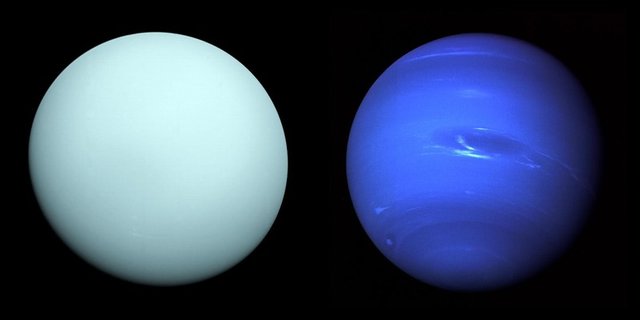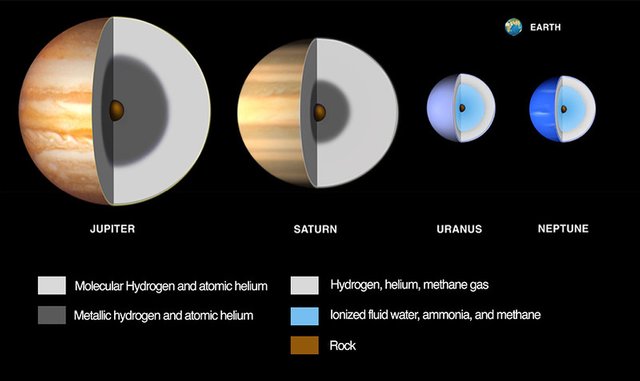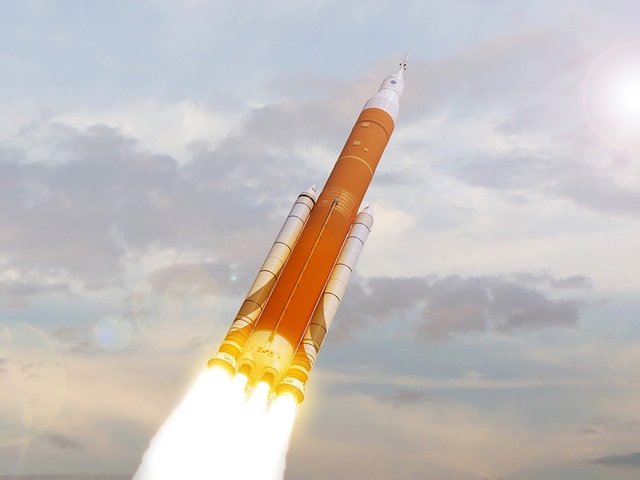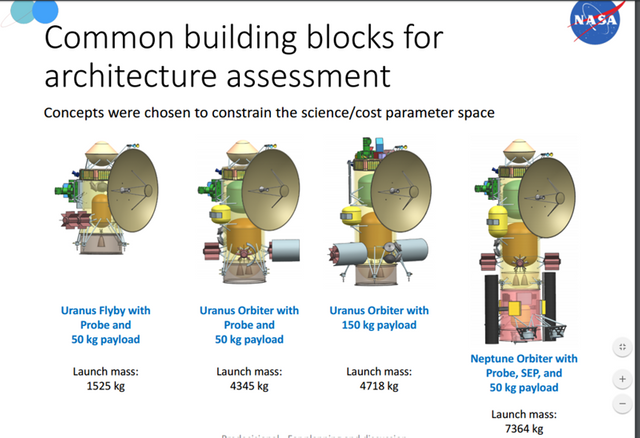Concepts of future missions to Uranus and Neptune
Uranus and Neptune have been visited briefly by one spacecraft, Voyager 2. Voyager rapidly flew by Uranus in 1986 and Neptune in 1989, as part of its grand tour of discovery that previously took it by Jupiter and Saturn. Then, in 1991, Alan Stern, then future head of New Horizons Pluto mission, proposed Neptune orbiter mission, but it was not funded by NASA - I wrote post about it in May. I wrote then that NASA has not Neptune mission on its table. I was wrong: a NASA-led study of potential future missions to the the "ice giant" planets Uranus and Neptune has been released three days ago.

Image: NASA/Caltech - Left: Arriving at Uranus in 1986, Voyager 2 observed a bluish orb with subtle features. A haze layer hid most of the planet's cloud features from view. Right: This image of Neptune was produced from Voyager 2 and shows the Great Dark Spot and its companion bright smudge.
A variety of potential mission concepts are discussed in the study, including orbiters, flybys and probes that would dive into plantets' atmosphere to study its composition. Orbiters would study satellite systems for years. Uranus has 27 known moons, while Neptune has 14.
Uranus and Neptune are referred to as ice giant planets. In spite of that name, relatively little solid ice is thought to be in them today, but it is believed there is a massive liquid ocean beneath their clouds, which accounts for about two-thirds of their total mass. This makes them fundamentally different from the gas giant planets, Jupiter and Saturn (which are approximately 85 percent gas by mass), and terrestrial planets like Earth or Mars, which are basically 100 percent rock.

Image: JPL/Caltech, based on material from the Lunar and Planetary Institute
Additionally, the latest findings from Kepler Mission revealed that exoplanets of Uranus/Neptune- class are very numerous but it is unknown how or where ice giant planets form, why their magnetic fields are strangely oriented, and what drives geologic activity on some of their moons.
The team asessed several flight paths to deliver probes with 90 - 150 kg of scientific payload to Uranus and Neptune.
They include existing rockets Atlas-V: optimal launch opportunities to Uranus and Neptune in 2029 -2032 use Jupiter gravity assist. Flight to Uranus will take 12 years. Use of Delta-IV Heavy can reduce interplanetary flight time by 1.5 years. No chemical trajectories exist for delivering a flagship class orbiter to Neptune in < 13 years using Atlas-V or Delta-IV. For shorter flight times future SLS rocket is needed.
Use of the SLS has potential benefits:
Increases mass of the orbiters and lowers flight times by 3 to 4 years.
Enables two-spacecraft missions with a single launch
When combined with aerocapture capability, enables very low flight times for both Uranus (<5 years) and Neptune (<7years).

Image: NASA
Several otions of the payload:

Image: Ice Giants EGU presentation Apr 2017
The costs of two flagship missions are estimated at 4 billion dollars.These costs include a number of innovations, among them:
- Optical communication at distances beyond 3 a.u.
- A number of small satellites which probes will release after arriving (Cubesats)
- Advanced radioisotope generators (Stirling, currently in development)
It is now up to the next decadal survey to recommend science priorities for NASA for the next decade. NASA will then determine if and when to fly a mission that is responsive to those priorities.
To install a lunar base at first will be the best and in second time to achieve a human return between the Earth and Mars seems to me more priority ^^
Both are better. But personally think that first infrastructure should be built - refueling, asteroid mining etc. Surfaces of planets better to leave for robots until they find there somthing exclusive. Too many resources needed to dive in these gravitational wells. I love weightlesness - flied on a plane with 45 sec zero-g ;-)
We are in a very distant future yet, but refueling is indeed a non-negligible basis.
Sometimes small to undertake big
They should name it the Enterprise. ;)